The Watcher
The Watcher began as a terrain study and grew into a calm first-person sandbox about wandering a mountain valley, meeting a stone golem, and solving a simple, ritual-like quest. It borrows the spirit of classic World of Warcraft’s quest flow, and rebuilds those ideas as a compact prototype focused on interaction, clarity, and the feel of being there.
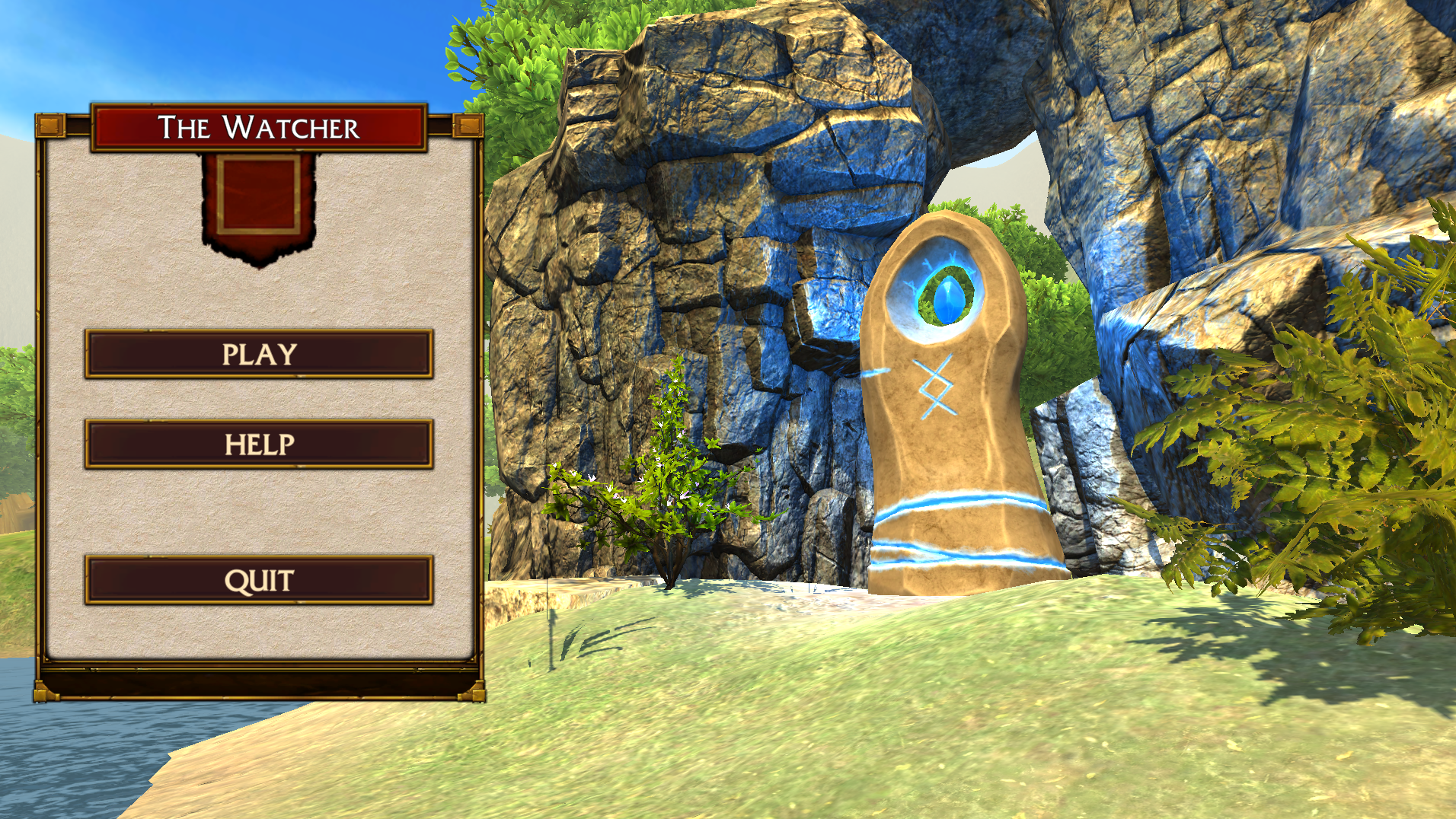
Behind the Project
The seed idea was straightforward: use Unity’s Terrain tools to sculpt a valley surrounded by mountains and make it feel alive enough to invite exploration. From there, the design leaned into:
- A first-person controller (mouse-driven look, FPS-style movement)
- A quest system inspired by WoW’s structure, dialog pages, objectives, and rewards
- An interaction model based on raycasts, so “what you’re looking at” becomes “what you can do”
Somewhere the player meets a stone golem who assigns a sipmle quest: find three gems and place them on their matching pillars scattered around the map. That required a generic system to handle:
- Dialog flows and multi-page quest text
- Objective tracking and turn-in logic
- Reward hooks and state changes
- Simple UI to echo the familiar quest screen feel
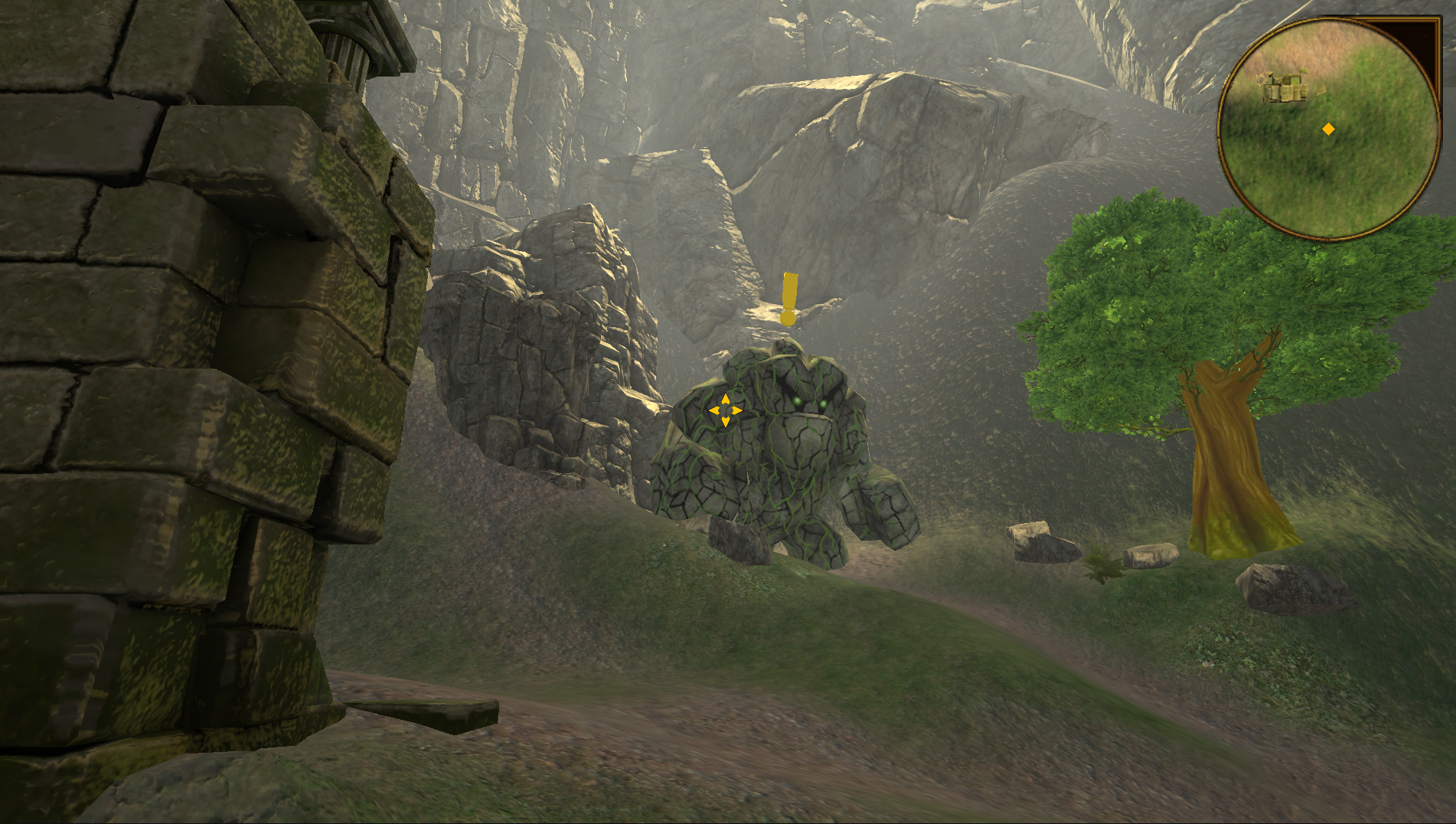
Under the hood, object interaction is dispatched by target type:
- Gems can be picked up, carried, dropped, and socketed
- Pillars accept the correct gem and “attach” it when placed
- NPCs (like the golem) trigger dialog, quest acceptance, and completion
There’s also support for scripted zone events so entering certain areas can trigger actions, nudges, or light world responses to help pace the walk.
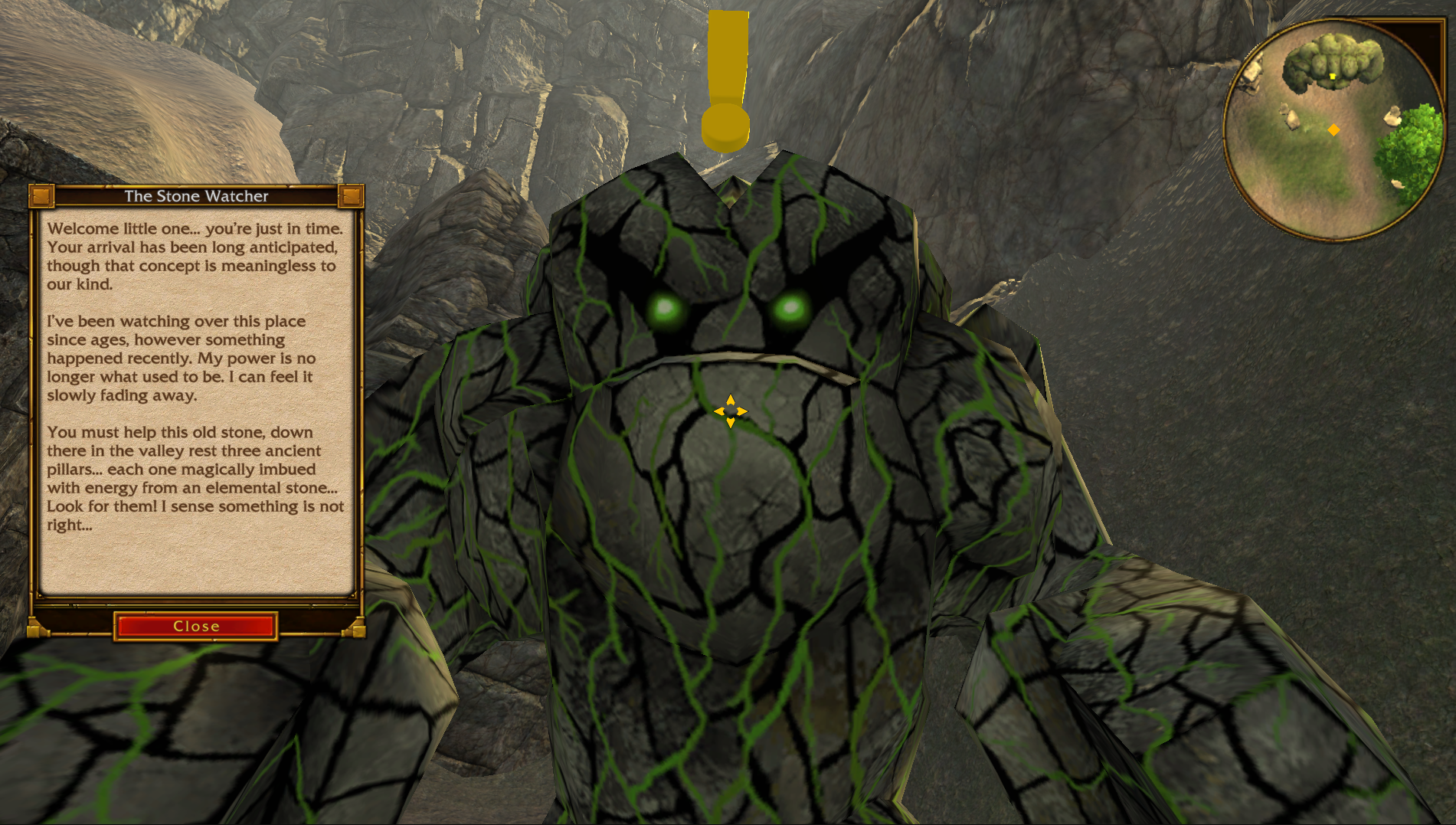
What to Expect
This is a peaceful prototype; no combat, no enemies, just a valley, a quest, and the satisfaction of putting pieces where they belong.
In this small experience, you’ll find:
- A first-person exploration loop in a hand-sculpted mountain valley
- A stone golem who gives you a quest with readable dialog pages
- gems, each with a corresponding pillar to discover and activate
- Raycast-based interaction for clear, targeted actions (pick up, drop, place, talk)
- Scripted zone triggers to pace exploration and surface gentle guidance
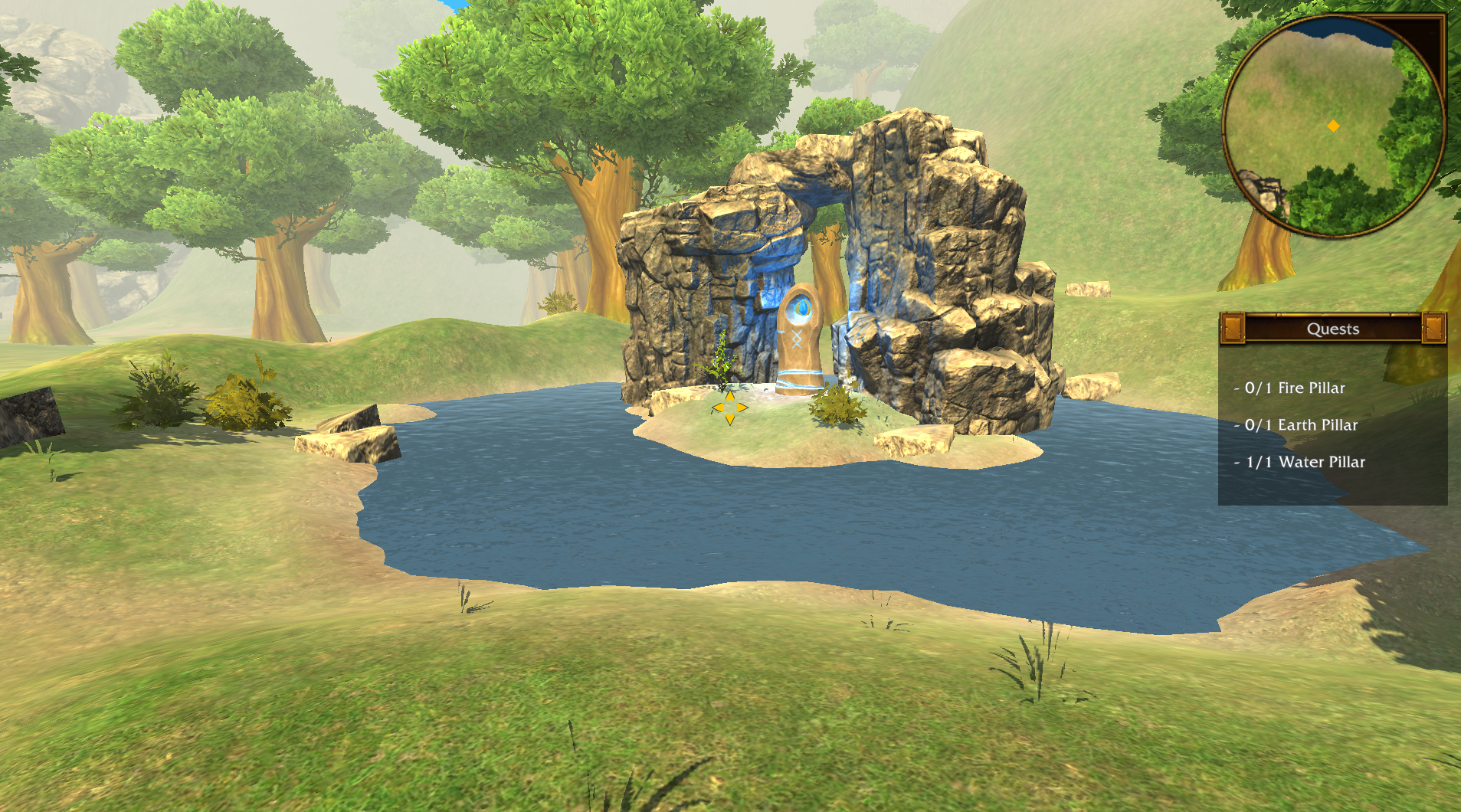
A Few Known Limitations
- No enemies or combat system (by design, for now)
- One handcrafted valley (no multi-biome progression yet)
- Mouse + keyboard only; not optimized for WebGL performance yet
- No save/persistence, sessions are self-contained
- Prototype UI; visual polish is pending
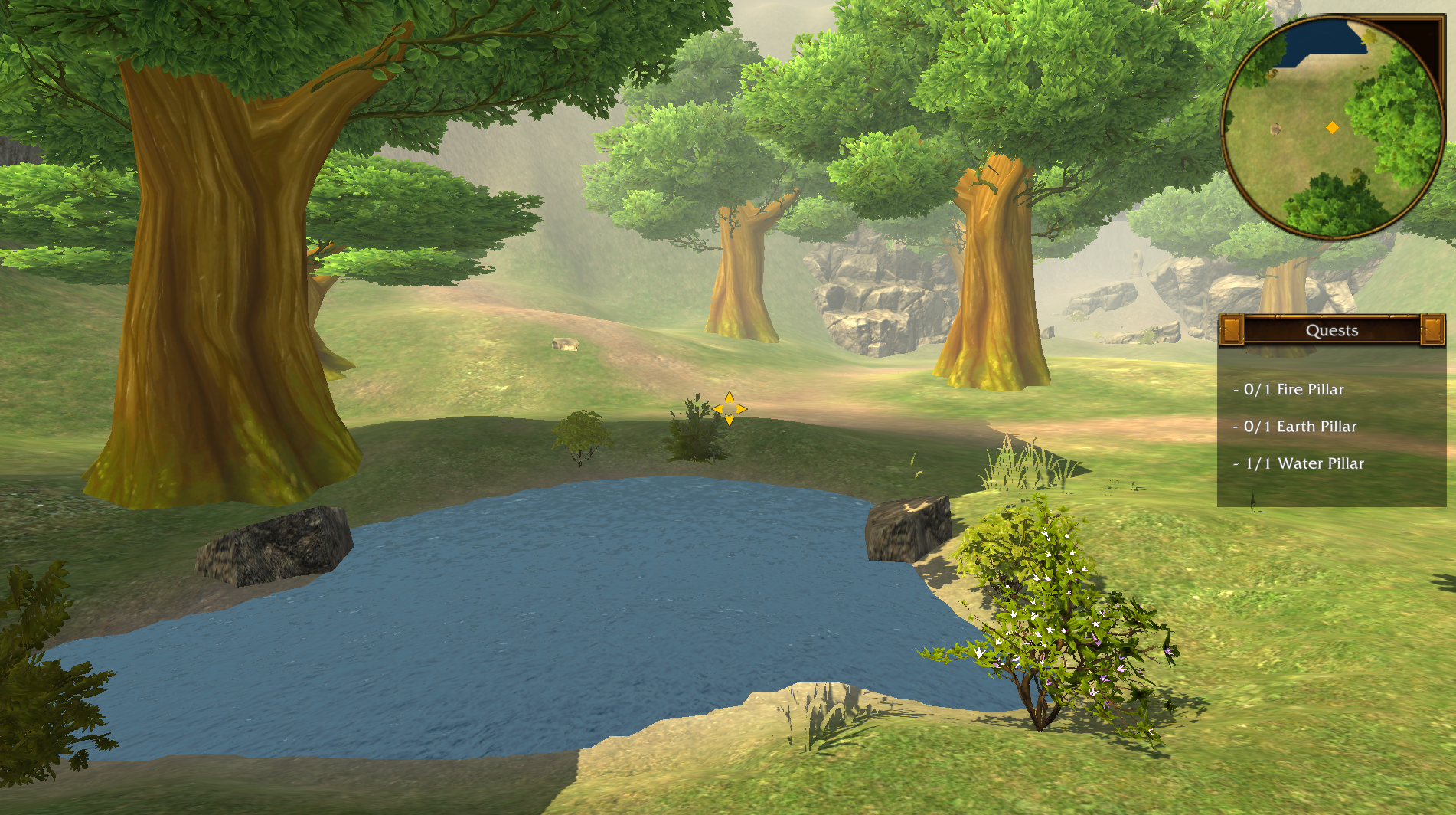
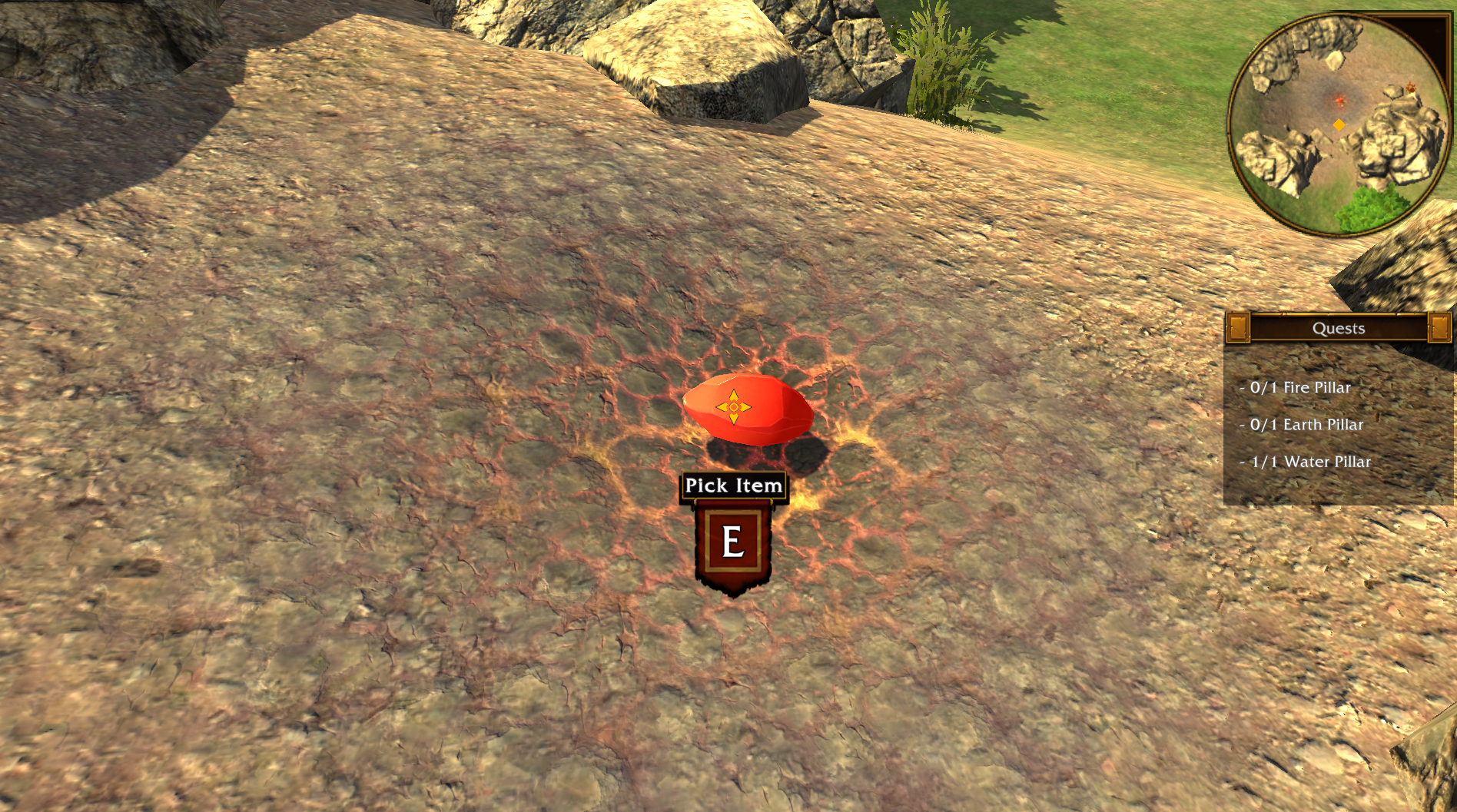
Why It Exists
This project is a study in terrain craft and interactive systems. The goal wasn’t to ship a finished RPG, but to build a reusable quest framework (dialog → objectives → rewards), a reliable targeting model (raycasts → actions), and a playable stage that turns a landscape into a gentle game.
Along the way, The Watcher became a reminder of why sandbox prototypes matter: they let you ask specific questions such as:
- How should quests read?
- When does interaction feel obvious?
- What makes a valley worth walking?
…and answer them in code you can reuse.
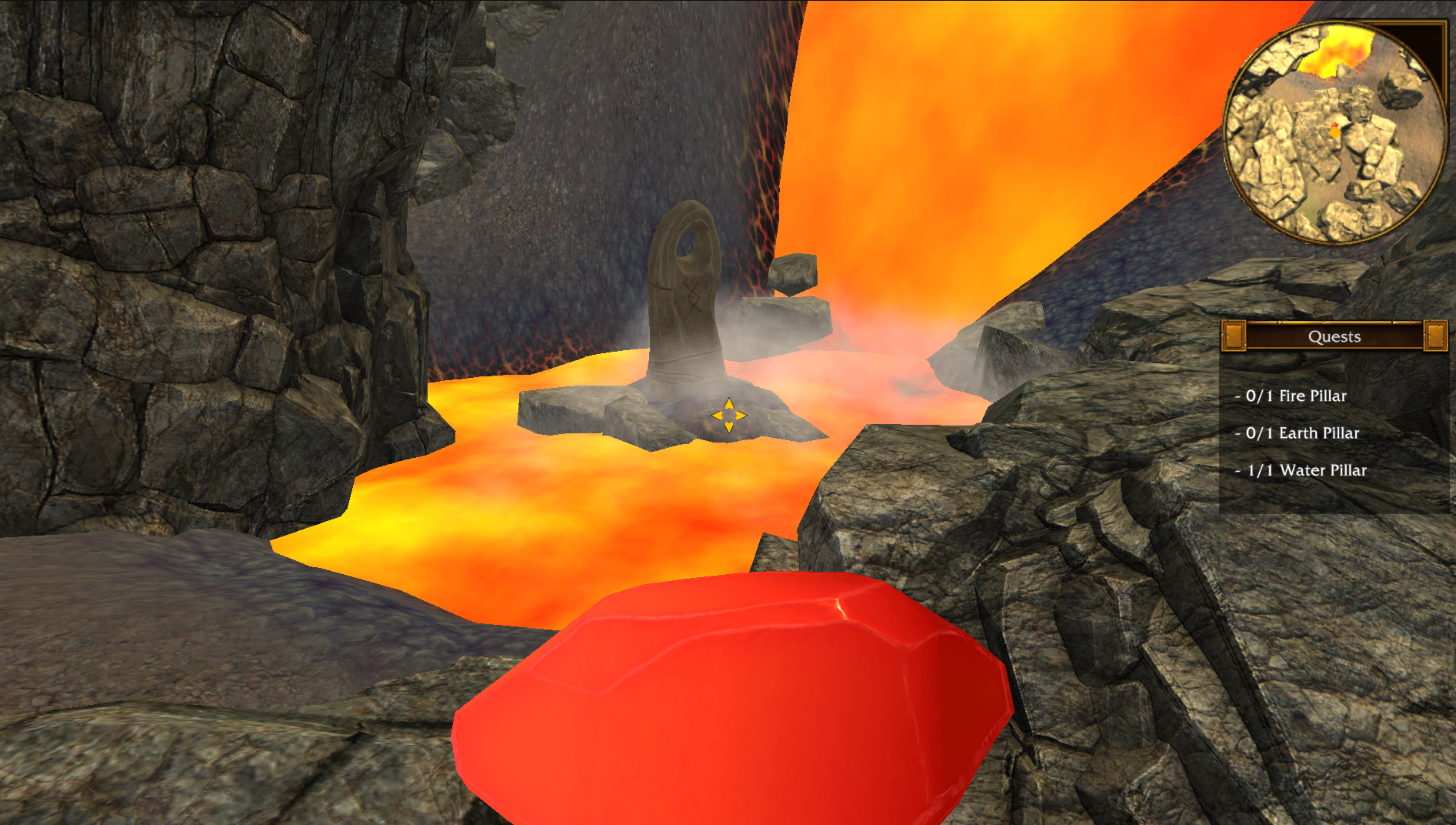
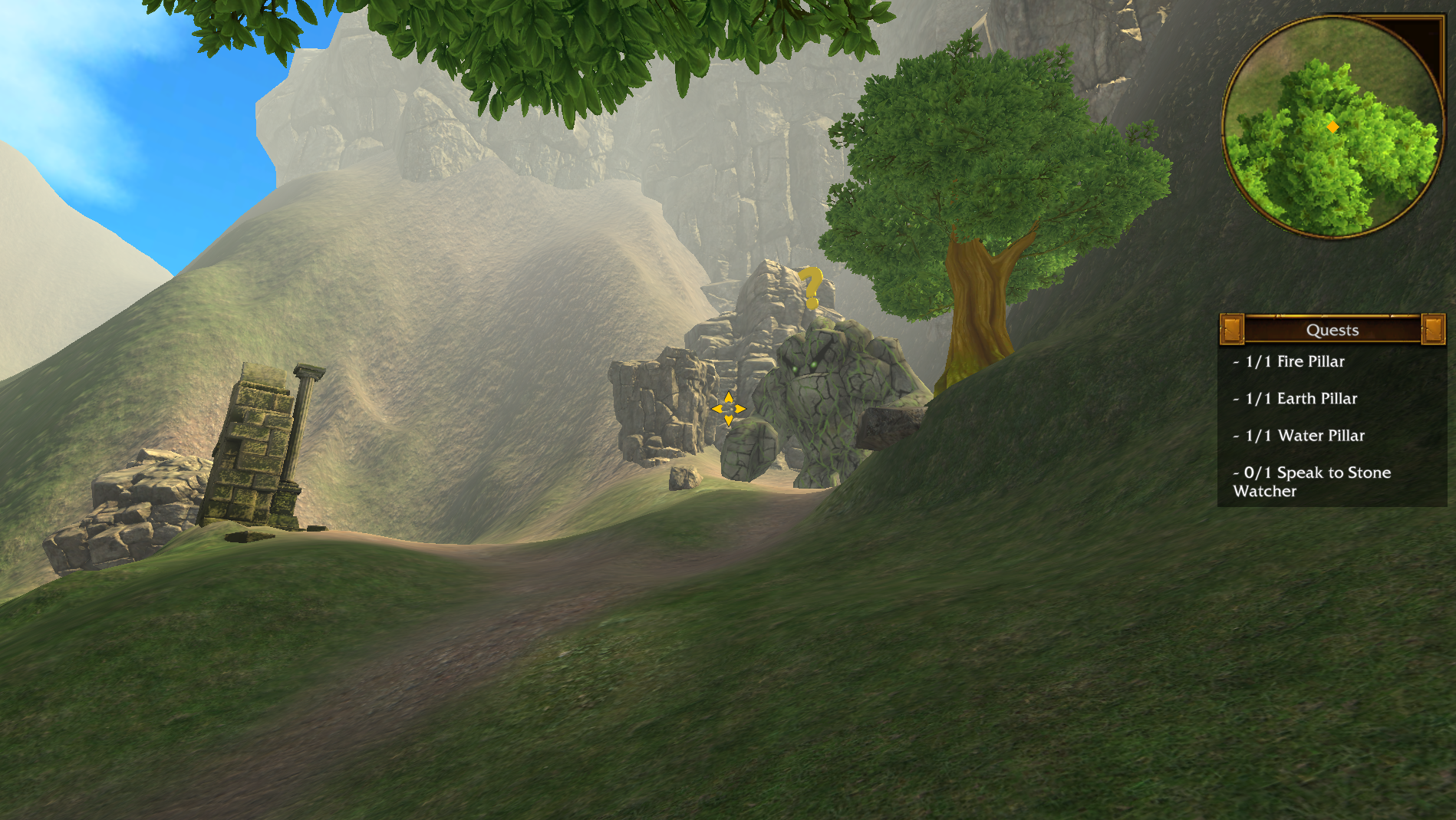
You can try a playable version here (though not fully optimized for WebGL):
